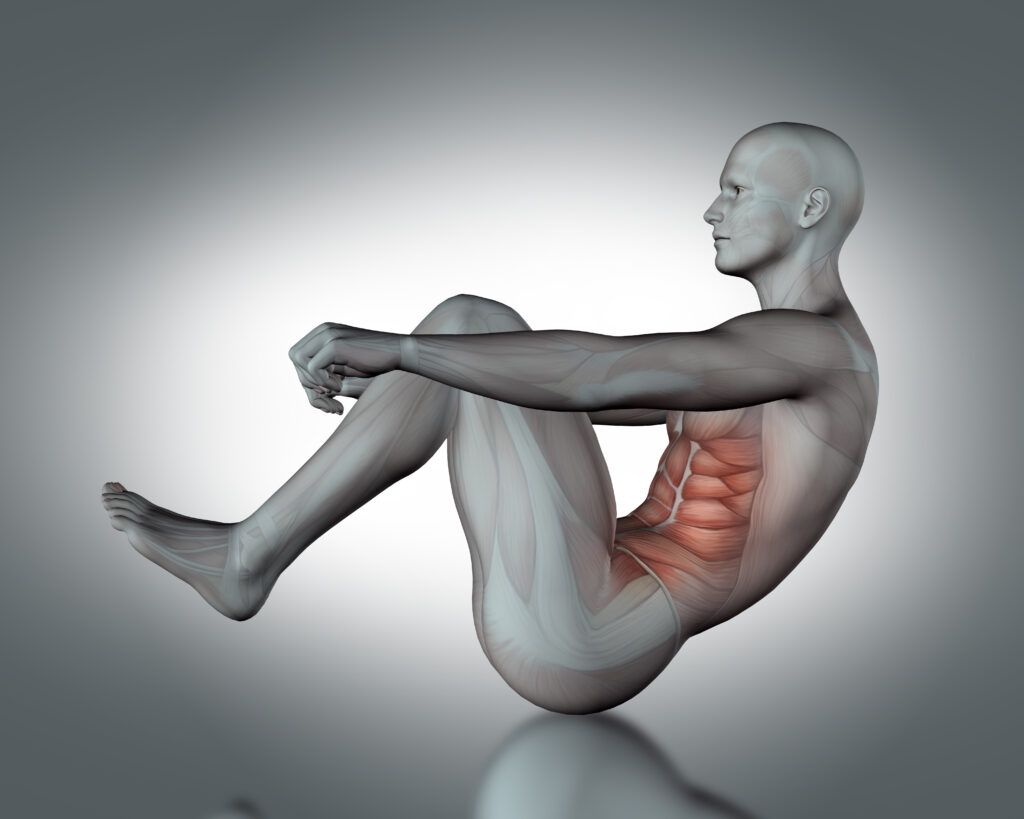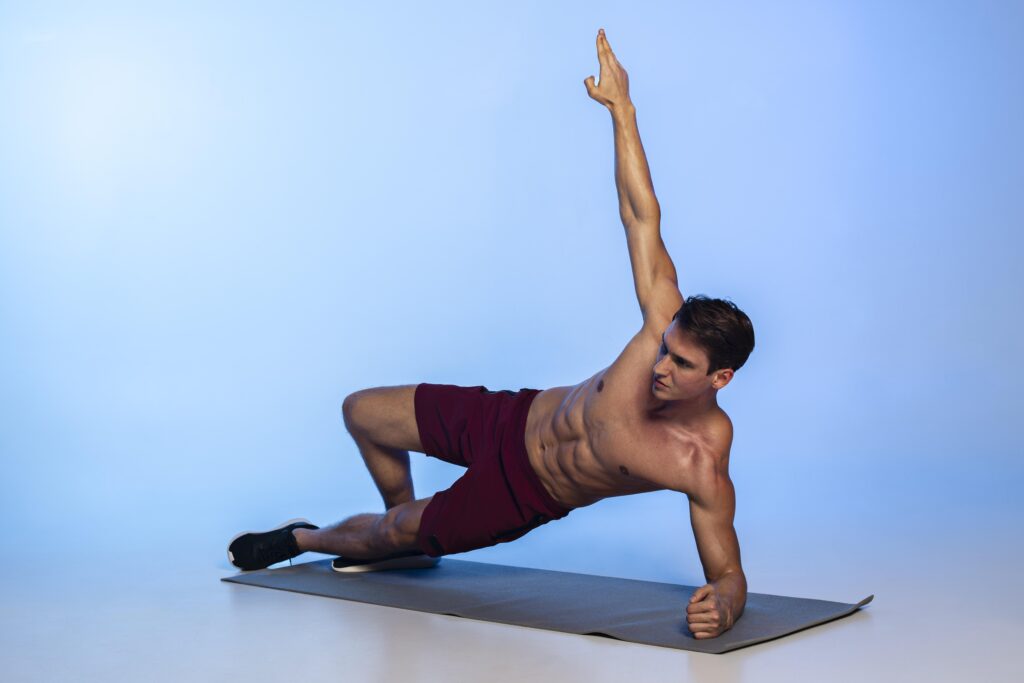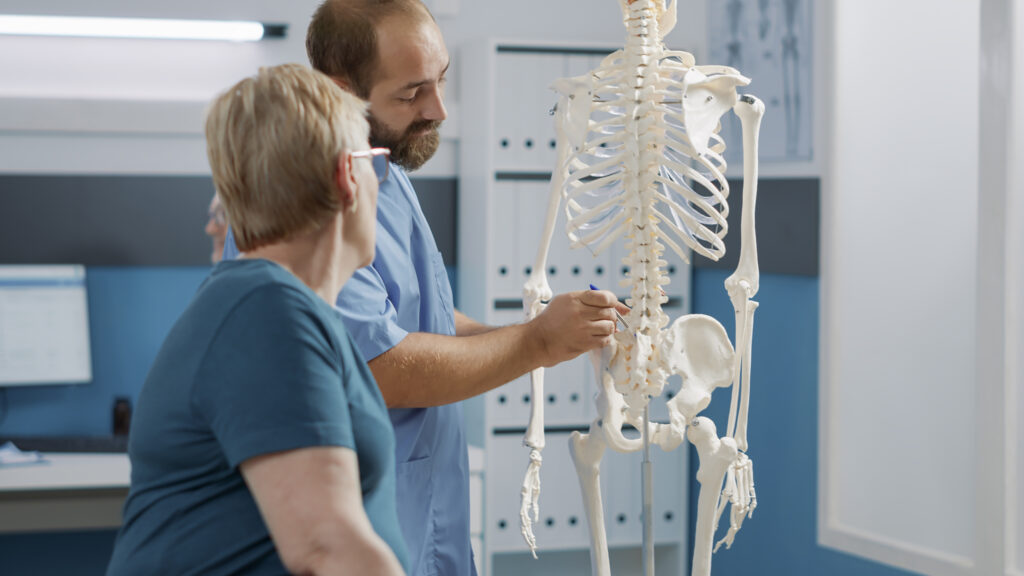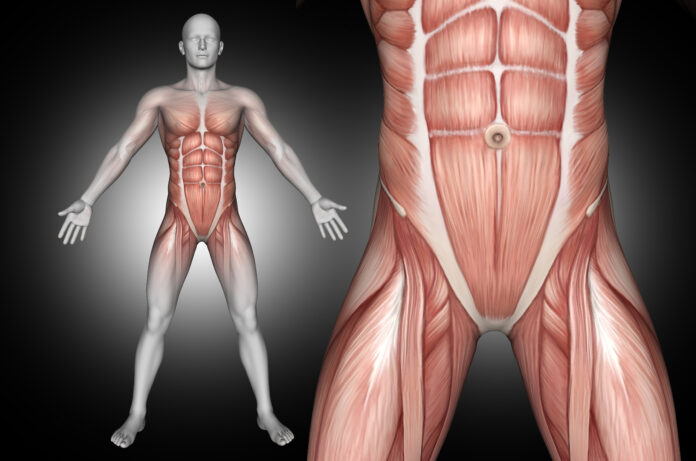Have you ever heard the phrase “engage your core” at least once in your life? It may surprise you that engaging your core is important for you even if you’ve never read a fitness magazine, set foot in a gym, or seen an exercise program. It means your core must be engaged. Let’s try to understand what your core is and how to “engage your core.”
Muscles surrounding your trunks such as your hip flexors, trunk extensors, pelvic floor, diaphragm, obliques, and abdominals collectively form your core. Your core works for balance in lifting weights and standing up from a chair. It also provides stability to your body postures. It helps mobility to allow your torso to move as needed like your movements for swinging a golf club or reaching for your seat-belt. In addition, your core promotes frictionless mobility in performing different everyday activities, including defecation, urination, breathing, and posture control.
When breathing, your diaphragm moves to allow air to flow into and out of your lungs. Similarly, when you sit up straight, your core muscles contract to keep your trunk upright. While using the bathroom, your core muscles are there to start or stop your business.
This article has brought a comprehensive guide to Engage Your Core, describing what your core muscles are and how they help in your trunk’s stability and mobility along with reviews of core exercises that you can incorporate into your workout regimen.
What Makes Your Core?
Several groups of muscles in your body make up your core. Here is a detailed description of those muscle groups. Rectus Abdominis
Rectus Abdominis
Your six-pack muscles also known as rectus abdominis are attached to your lower ribs and the front of your pelvis. It allows movements in your spine flexors such as when you sit up in a bed or perform a crunch. This muscle group is the most superficial of all core muscles and is therefore not as useful for spinal stability.
Internal and External Obliques
The internal and external obliques provide stability to the front sides of your trunk because they are attached on the lateral sides of the trunk from your ribs to the pelvis.
They support trunk rotation whenever you swing a baseball bat or take a side bend. They also allow primary movements by working bilaterally to fix the spine.
Transversus Abdominis
This muscle group originates from several points including your lower six ribs and the top and back of the pelvis. Its muscle fibers run along your body to the linea alba or midline. It provides support to your spine because it is found deep inside your abdomen. The transversus abdominis muscles co-contract with the multifidus muscle to give your lower back a deep, segmental stability in a particular way. If you ever have chronic lower back pain, strengthening these muscles may benefit you.
Pelvic Floor
These muscles are located on the underside of the pelvis and work as a hammock or sling. Engaging these muscles may lift your stomach upward. This muscle group acts as a deep stabilizer for your pelvis and spine. It also helps start and stop the flow of urine and feces.
Diaphragm Muscles
These muscles attach to the underside of your lower ribs and are responsible for the primary movements involved in breathing in and out but recent research claims that this muscle group plays an important role in pain tolerance, lumbar stabilization, swallowing and vomiting, lymphatic return, regulating emotional states and cardiac function.
Back Extensors
Multilayered muscles, including the erector spinae muscles, multifidus, and quadratus lumber are collectively called your back extensors. Usually, they work to attach your individual; vertebrae to the vertebrae below and above and also your pelvis to your spine. They promote spinal extension movements including backward bending, and spinal support while bending forward or lifting loads, such as during biceps curls or squats. These muscles also support your posture balance.
Iliopsoas
Two major hip flexors in your body are called iliacus and psoas which cover your one muscle belly. Therefore they are known as iliopsoas. These muscles originate from the lumbar spine and thoracic spine. They also arise from the iliac crest of the pelvis, inert of the femur, and upper leg bone.
They help you in bringing your legs towards your torso by flexing the hip bones. While performing high knee exercises iliopsoas muscles connect your spine to stabilize your core deeply.
Effective Ways to Engage Your Core
What you are trying to achieve will decide the ways to engage your core. This means if you’re doing sit-ups, the muscles recruited and the order in which they fire will be different than when you try to hold your balance standing on one leg.
Moreover, when you engage your core, your muscles feel different depending on several factors such as whether you’re pushing or pulling weight, whether you are lying down, sitting or standing, or whether you’re trying to stabilize your spine or move it. Although all core muscles are not attached, they function in harmony with each other. That means they don’t work in isolation regardless of how, when, or why you engage your core. Your core must be strong enough to be able to engage itself in any situation or in every way, providing dynamic spinal support and stability to your moving body. Here some primary ways to engage your core are discussed. Have a look!
Concentric Contraction of The Abs and Back A back exercise or a crunch are the best traditional ab exercises and are used as prime movers for using your core muscles.
A back exercise or a crunch are the best traditional ab exercises and are used as prime movers for using your core muscles.
During performing a crunch, your obliques and rectus abdominis contract concentrically to pull your ribs towards your hips, which means they shorten and thus lift your shoulders and head. Such contractions are useful for generating movements or accelerating your body. These are considered the most powerful and familiar types of muscular contractions for most people.
Eccentric Contractions of the Abs and Back
Such muscular contractions are considered best for decelerating the force or movement of the body. They occur on the other side of the joint as a reaction to concentric contractions. They are lengthening contractions which always occur in tandem.
For example, two types of contractions are involved in your sitting posture on the desk while you’re noticing that you’re slumping. Straightening or lifting your spine will happen due to eccentric, or lengthening contractions in the abdominals and concentric contractions in the spinal extensors. Here both contractions are responsible for core function.
Abdominal Bracing Isometric contraction of muscles in your abdominal wall which cannot move or change the position of your spine, pelvis, or ribs is known as abdominal bracing. It is an effective methodology to protect the spine whenever you are moving heavy loads, such as during weight lifting.
Isometric contraction of muscles in your abdominal wall which cannot move or change the position of your spine, pelvis, or ribs is known as abdominal bracing. It is an effective methodology to protect the spine whenever you are moving heavy loads, such as during weight lifting.
Recent research has suggested that abdominal bracing is beneficial for activating and strengthening the superficial abdominal muscles.
Abdominal Draw-in or Hollowing
Abdominal hollowing or abdominal draw-in maneuver happens when you focus on bringing your navel to your spine. These contractions are responsible for stable movements in your body. For instance, you can use this type of contraction when thought of as a dynamic part of your exhalation.
Recent research suggests that to engage your core deeply, you can draw the abs in or hollow them. But still, many vocal proponents of both types of stabilization contraction consider that the most functional core is one that can perform both hollowing and bracing techniques and can use each method according to need.
The Best Exercises to Engage Your Core
Here, we are going to discuss some important workouts or exercises that you can use to engage your core and get abdominal stability. These exercises are by no means exhaustive but are supportive of understanding how to engage your core muscles safely. The Abdominal Draw
The Abdominal Draw
- Bend your knees and lie on your back, sit up straight on a chair then inhale gently.
- Bring your belly button to your spine by pulling your stomach in and then exhale gently. You can still breathe easily but you may feel that muscles around your ribs are getting tightened. Don’t move your back. It shouldn’t be pushed into the floor or arched.
- Hold for ten minutes and then relax.
- Repeat it twice.
The Plank
- Initiate with a push up position on your toes and hands. In case of difficulty, you can lower your knees.
- Push your abdomen towards your spine and keep your buttocks aligned with your body. This posture helps you feel all the muscles working in your abdomen.
- Hold this position for 15 to 40 seconds.
This type of workout puts a heavy load on your spine. If you experience back pain after this exercise, it is good to refrain from this exercise or modify it by doing this plank on your knees. The Side Plank
The Side Plank
- Put one foot on top of the other and lie on your side with your elbow on the floor. Now the upper parts of your body will be propped up. Keep your hand on the floor to maintain balance or reach your top arm to the sky.
- Support your body on your forearms and lift your hips into the air by straightening your legs. . if it is difficult for you, you can keep your knees on the floor and make a straight line from knee to head.
- Keep your feet, elbow, and hip aligned, and keep your shoulder over your elbow. You may feel your obliques working on your bottom side.
- Hold this position for 30 to 50 seconds.
The Bird Dog
- Maintain a neutral spine with a start on your hands and knees, as if you’re a table.
- Reach your arm out in front of you so it’s in the direction of your head and torso.
- Extend your opposite leg in line with your arm and torso, behind you.
- Keep your hips facing towards the floor. You may feel the muscles working in your back and abdomen.
- Hold this position for 10 seconds then repeat it with your opposite arm and leg.
 The Dead Bug
The Dead Bug
- Start with your knees bent and feet flat by lying on your back.
- Lift your knees, and tighten your abdominals by keeping your back flat. Keep your knees and hips bent at a 90-degree angle.
- Tap one toe to the floor and repeat with the other toe.
- You can increase the difficulty level by extending your arms straight up over your shoulders. Now lower one foot down to the floor and reach the opposite arm back overhead. Keep your lower back on the floor while pulling your ribs inward.
- Keep your back flat and extend your leg as far as you can.
- Return To the initial posture and switch the side.
The Bridge
- Keep your feet distant from your hip.
- Squeeze your buttocks and lift them off the floor by keeping your trunk and pelvis together.
- Hold for 5 seconds.
- Return your trunk to the floor and repeat.
What Does Your Core Do?
Your core performs multiple functions, including breathing, bowel and bladder control, balance of the body, and stabilization of your postures. Spinal Mobility: Your core muscles play an important role in the stabilization and mobilization of your spine through flexion, lateral flexion, extension, and rotation.
Spinal Mobility: Your core muscles play an important role in the stabilization and mobilization of your spine through flexion, lateral flexion, extension, and rotation.
Trunk Stability: When you try to lift something over your head, pick something up from the floor, and push or pull an object, your core muscles keep your trunk stable and strong by contracting. Your core muscles support your body in weightlifting, judo, running, and soccer.
Balancing The Body: The balance of your body gets improved with the aid of your core muscles. For instance, whenever you get bumped by someone, your brain and trunk recognize the abrupt change in balance. Then your core muscles help keep your body upright.
Conclusion
Contraction in your trunk muscles to provide support for your pelvis and spine to maintain balance in static position or dynamic movements are the techniques to engage your core. Your core muscles are used to maintain the balance of your body, lift things, push, pull, and general movements.
Stronger core muscles decrease the risk of injury and improve mobility in your spine. The stability of your spine also depends on the strength of your core muscles. These muscles are the “core” of all your body movements, you perform throughout the day. Learning to engage your core muscles can help you move pain-free for years.







